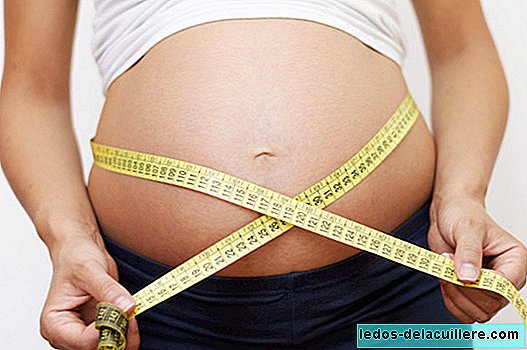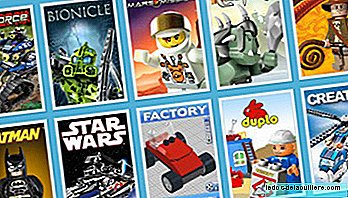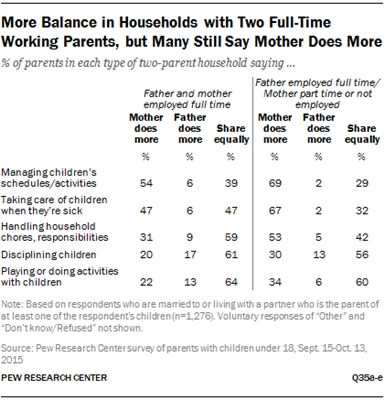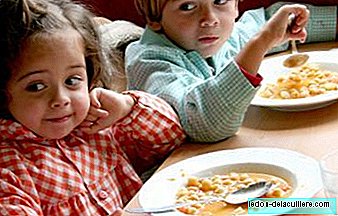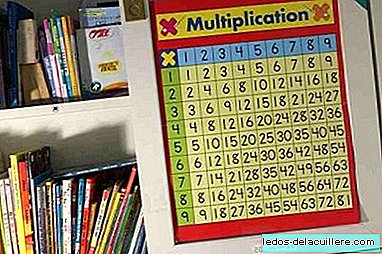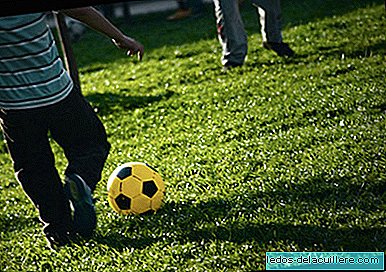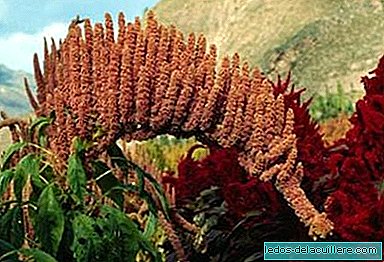
We have talked about the two gluten-free cereals most used in our environment and which are ideal to start with the complementary feeding of babies, rice and corn. Today we will talk about another product very similar to cereals, so much that it is usually considered as such, and that exceeds its nutritional qualities for its protein richness and for its composition rich in micronutrients: the quinoa.
The gluten-free cerales should be the only ones that we offer our baby until at least seven months of life, however they will also be a staple food throughout their life.
Since it is not necessary to hurry and slowly add new things at the beginning of the complementary feeding, it may not be necessary to immediately use new products in addition to the two mentioned, however, there are other cereals or very similar foods that behave nutritionally and nutritionally similarly, it is interesting to know.
Gluten is a protein found in the seeds of wheat, oats, barley and rye. In addition to corn and rice we find gluten-free cereals such as millet, sorghum, or sesame, and other very similar products that are also suitable for gluten-free diets and are very interesting nutritionally: the quinoa, our protagonist today, and also buckwheat or buckwheat, amaranth, wild rice and, in this case being a tuber, tapioca.
Cereals and their derivatives are rich in complex carbohydrates, they have fiber according to the process followed in their processing and proteins between 6 and 16% of their weight, although they are of moderate quality, since they do not have all the essential amino acids. They also contain minerals and vitamins, especially from group B.
Today we will deal with a product that resembles cereals so much that they are usually considered such even if it is not, the quinoa. It is an ancient food and with really exceptional qualities, which, despite being little known in Europe, is increasingly spreading.
Quinoa
I told you yesterday about my experience in my trip to Peru with the discovery of the almost infinite varieties of corn, but I remember that I did not know the quinoa and it became my food for several days in the island of Taquile, in the middle of the Titicaca, since I did not dare to eat anything else afflicted as it was of the typical ills of the traveler.
Its cultivation is documented more than 6000 years ago and today it continues to be produced in Peru and Bolivia especially. During the Spanish conquest the data on this crop almost disappeared, but, nevertheless, it has survived.
In pre-Hispanic Andean America the quinoa It was a food of enormous importance and it is one of the most nutritionally interesting food products that exist in the plant world.
The mother of all grains
That's what the ancient Quechua people called it, and, really, there is no grain like it.
Its protein content is very high, between 12 and 18%, even more, and also contains all the essential amino acids, which makes it a valid meat substitute widely used by vegetarians and that can contribute to our diet and that of children the benefits of an adequate percentage of vegetable proteins without the added weight of saturated fats.
It has unsaturated fats, especially important is its linoleic acid content, and also minerals such as iron, phosphorus and calcium. They also have a very interesting vitamin content.
Its balance between proteins and hydrates, its content in calcium, iron and other minerals, and that which provides the essential amino acids of the human diet make it an almost perfect food.
Its protein quality, that is, the index of ingested proteins that are assimilated by the human body, is higher than that of meat and milk even, only being exceeded by the egg, which is taken as a reference in this classification. It is a food that in some ways resembles milk since it is rich in protein and contains calcium and many other minerals.
The quality of its proteins and its quantity by weight is exceptional, and that is because more than 30% of the weight of the seed is the germ. For every half cup of raw quinoa we find 40 grams of carbohydrates, 10 grams of high quality protein, 4 grams of healthy fats, 95% of the iron needed in the daily adult diet and 12% of calcium, in addition to vitamin C, E, complex B and folic acid.
Its preparation
The reason why the quinoa would not be used by Europeans is its mild bitter taste, produced by saponin, a natural toxin that covers it. This has an advantage, no pesticide is usually needed to ensure the harvest, so we find it free than chemicals, one more point in its favor in terms of children's diet.
Saponin in many commercial presentations has already been eliminated and also washed with plenty of water without problem.
We find quinoa in organic cereals for babies and we can also offer it in porridge made with the later crushed grains or with flour, being able to find it in herbalists and dietary stores.
We can also find it, thinking of the older ones, as a component of cereal bars combined with others, this being a healthier option than the typical snacks of industrial pastries.
Its flavor, if we wash it well, is no longer bitter, but gently countersunk. Once washed, it is cooked in salted water. It can be used to add it to salads or to the paste of vegetable croquettes, such as the pasta of a soup or to use it with a stir-fry of vegetables. I am a true lover of this food, for its soft crunchy texture and spicy flavor. If we get used to offering it to children, they will accept it and, of course, its nutritional qualities are superior to other more common foods in our diet.
Conclusion
Quinoa is an exceptional food, very interesting in the children's diet and that can provide children with high quality nutrients in a balanced way. It has no gluten and the quality and quantity of the vegetable proteins it contains is excellent, so we can consider it one of the most interesting products to include in the children's diet.


